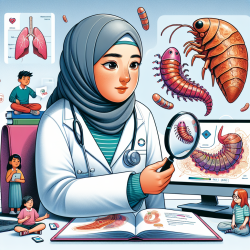Introduction
The COVID-19 pandemic has been a period of significant upheaval, with many families facing unprecedented challenges. A recent study titled Home, but Left Alone: Time at Home and Child Abuse and Neglect During COVID-19 explores the impact of increased time at home on child maltreatment referrals. The findings are both alarming and enlightening, offering insights that can help practitioners enhance their skills and understanding of child welfare during such crises.
Key Findings
The study reveals a dramatic 58% decrease in child maltreatment referrals during the initial stages of the pandemic, primarily due to fewer reports from educational personnel. However, as time at home increased, so did referrals for material and supervisory neglect. Each additional 15 minutes spent at home was associated with a 3.5% increase in material neglect referrals and a 1% increase in supervisory neglect referrals.
Implications for Practitioners
These findings have several implications for practitioners in the field of child welfare and education:
- Awareness of Hidden Neglect: With schools closed, many instances of neglect went unnoticed. Practitioners should be vigilant in identifying signs of neglect in virtual settings and through alternative communication channels.
- Enhanced Support Systems: The increase in neglect cases suggests a need for robust support systems for families, particularly those struggling with economic hardships and the pressures of remote work and childcare.
- Policy Advocacy: The study underscores the importance of advocating for policies that support families during crises, such as access to affordable childcare and mental health resources.
Encouraging Further Research
While the study provides valuable insights, it also highlights the need for further research. Practitioners are encouraged to explore:
- Long-term Effects: Investigating the long-term impact of increased time at home on child development and well-being.
- Alternative Reporting Mechanisms: Developing new methods for detecting and reporting child maltreatment in the absence of traditional school-based observations.
- Community-Specific Interventions: Tailoring interventions to address the unique challenges faced by different communities, particularly those with limited access to resources.
Conclusion
The COVID-19 pandemic has highlighted vulnerabilities in our child welfare systems, particularly in times of crisis. By implementing the study's findings and pursuing further research, practitioners can play a crucial role in safeguarding children and supporting families. For those interested in a deeper dive into the research, the original paper can be accessed here.










